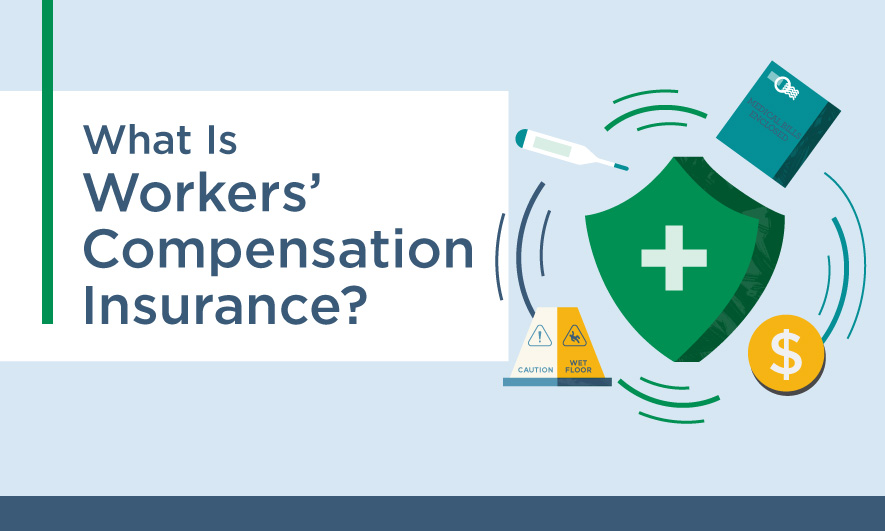Work comp insurance, also known as workers’ compensation insurance, is designed to provide medical and wage benefits to employees who suffer work-related injuries or illnesses. Understanding what it covers and how to claim it can make a significant difference in navigating the aftermath of a workplace injury. This guide will help you understand the intricacies of work comp insurance, its coverage, and the steps to take when filing a claim.
What is Work Comp Insurance?
Definition and Purpose
Workers’ compensation insurance is a type of coverage that employers are required to provide for their employees. It serves to protect both the employer and the employee in the event of a work-related injury or illness. The primary purpose of this insurance is to ensure that injured workers receive medical treatment and financial compensation, while also protecting employers from lawsuits related to workplace injuries.
Legal Requirements
In most states, businesses with employees are mandated by law to carry workers’ compensation insurance. The specific requirements can vary by state, including the types of businesses that need to carry it and the benefits provided. Employers who fail to provide this insurance may face significant legal penalties and fines.
What Does Work Comp Insurance Cover?
Medical Expenses
One of the primary components of workers’ compensation coverage is medical expenses. This includes costs related to:
- Emergency care: Immediate treatment following the injury or illness.
- Hospitalization: Costs associated with hospital stays, surgeries, and other necessary treatments.
- Medical tests: Diagnostic tests like X-rays, MRIs, and blood tests.
- Medications: Prescription drugs needed for recovery.
- Rehabilitation: Physical therapy and other rehabilitative services to aid in recovery.
- Follow-up care: Ongoing medical appointments and treatments.
Wage Replacement
Work comp insurance also provides wage replacement benefits to employees who are unable to work due to their injury or illness. The amount and duration of these benefits can vary but generally include:
- Temporary disability: Payments made to employees who are temporarily unable to work.
- Permanent disability: Payments for employees who suffer a permanent impairment that affects their ability to work.
- Partial disability: Benefits for employees who can return to work but are unable to perform their previous duties fully.
Disability Benefits
Disability benefits under workers’ compensation can be classified into four categories:
- Temporary Total Disability (TTD): Benefits provided when an employee is completely unable to work for a temporary period.
- Temporary Partial Disability (TPD): Benefits for employees who can work in a limited capacity while recovering.
- Permanent Total Disability (PTD): Benefits for employees who are permanently unable to work.
- Permanent Partial Disability (PPD): Benefits for employees who have a permanent impairment but can still work in some capacity.
Death Benefits
If a work-related injury or illness results in an employee’s death, workers’ compensation insurance provides death benefits to the employee’s dependents. These benefits typically include:
- Funeral expenses: Coverage for funeral and burial costs.
- Survivor benefits: Financial support for the deceased employee’s dependents, such as a spouse or children.
How to File a Workers’ Compensation Claim
Reporting the Injury
The first step in filing a workers’ compensation claim is to report the injury or illness to your employer as soon as possible. Timely reporting is crucial to ensure your claim is processed smoothly. Follow these steps:
- Notify your supervisor: Inform your immediate supervisor or manager about the incident.
- Complete an incident report: Fill out any required incident report forms provided by your employer.
- Document the injury: Keep detailed records of the injury, including dates, times, and descriptions of the incident.
Seeking Medical Attention
After reporting the injury, seek medical attention immediately. Follow your employer’s guidelines regarding which medical providers to visit. Ensure you:
- Get a thorough examination: Obtain a complete medical evaluation to document your injury.
- Follow treatment plans: Adhere to the treatment plan prescribed by your healthcare provider.
Filing the Claim
To file a workers’ compensation claim, follow these steps:
- Obtain the necessary forms: Your employer or your state’s workers’ compensation board will provide the required claim forms.
- Complete the forms accurately: Fill out the claim forms with detailed and accurate information about your injury and medical treatment.
- Submit the forms: Return the completed forms to your employer or directly to the workers’ compensation board, as instructed.
Follow Up on Your Claim
After submitting your claim, it’s important to follow up to ensure it is being processed. Keep track of the following:
- Claim status: Regularly check the status of your claim with your employer or the workers’ compensation board.
- Communication: Maintain open communication with your employer, insurance company, and medical providers.
- Documentation: Keep copies of all correspondence, medical records, and claim forms related to your case.
Common Challenges and How to Overcome Them
Claim Denial
One of the most common challenges in securing workers’ compensation benefits is claim denial. Reasons for denial can include:
- Late reporting: Failing to report the injury within the required timeframe.
- Lack of evidence: Insufficient medical documentation or witness statements.
- Disputed injury: Disagreements about whether the injury is work-related.
If your claim is denied, consider the following steps:
- Understand the denial: Review the denial letter carefully to understand the reasons for the decision.
- Gather evidence: Collect additional medical records, witness statements, and other documentation to support your claim.
- Appeal the decision: File an appeal with your state’s workers’ compensation board and consider seeking legal assistance.
Delayed Payments
Delays in receiving workers’ compensation benefits can cause financial strain. To address this issue:
- Stay informed: Keep track of your claim’s progress and follow up regularly.
- Communicate: Maintain open communication with your employer and the insurance company.
- Seek assistance: If delays persist, consider consulting a workers’ compensation attorney for help.
Retaliation
Unfortunately, some employees may face retaliation from their employer after filing a workers’ compensation claim. Retaliation can include:
- Termination: Being fired after filing a claim.
- Reduced hours: Having work hours significantly reduced.
- Harassment: Experiencing harassment or negative treatment at work.
If you face retaliation, take the following steps:
- Document the retaliation: Keep detailed records of any retaliatory actions taken against you.
- Report the retaliation: Inform your state’s workers’ compensation board or labor department about the retaliation.
- Seek legal help: Consult a workers’ compensation attorney to discuss your rights and potential legal action.
Summarizing
Understanding work comp insurance, what it covers, and how to claim it is crucial for protecting your rights as an employee. By following the steps outlined in this guide, you can ensure that you receive the medical treatment and financial support you need after a work-related injury or illness. Remember to report your injury promptly, seek immediate medical attention, file a thorough claim, and keep detailed records throughout the process. If you encounter any challenges, such as claim denial or retaliation, don’t hesitate to seek legal assistance to safeguard your rights.

